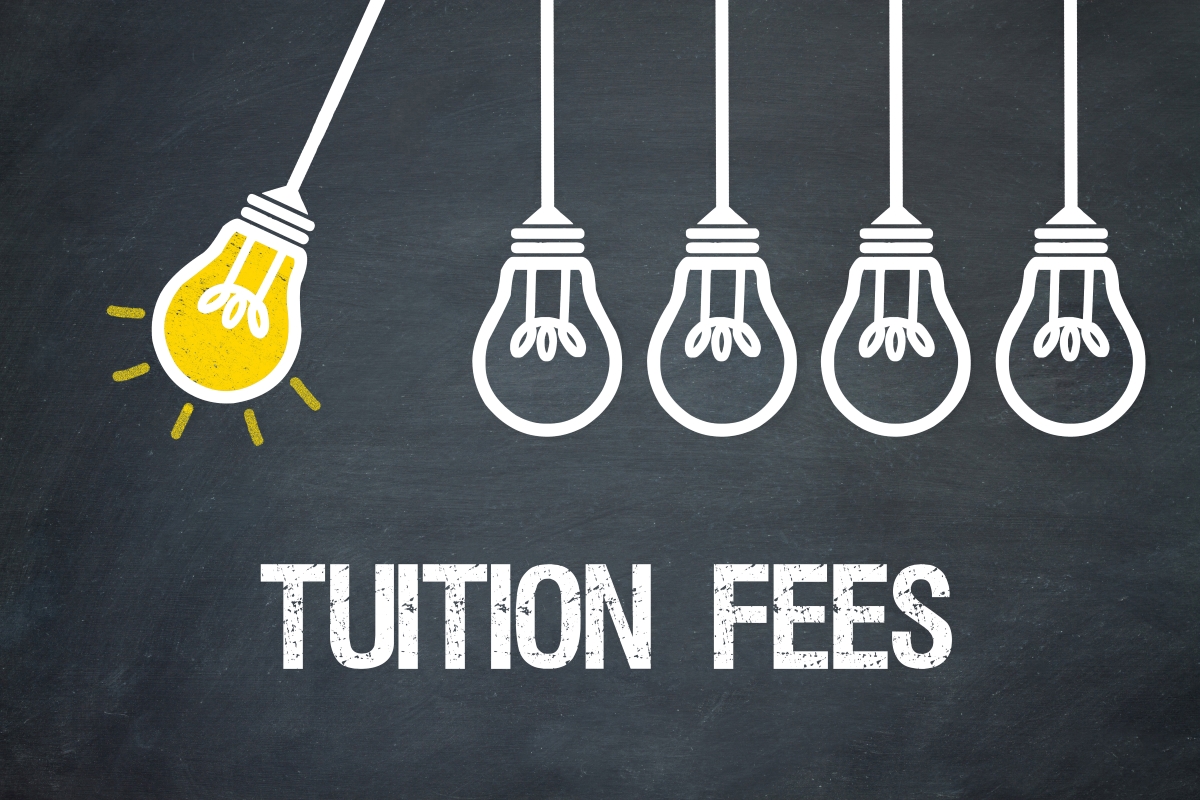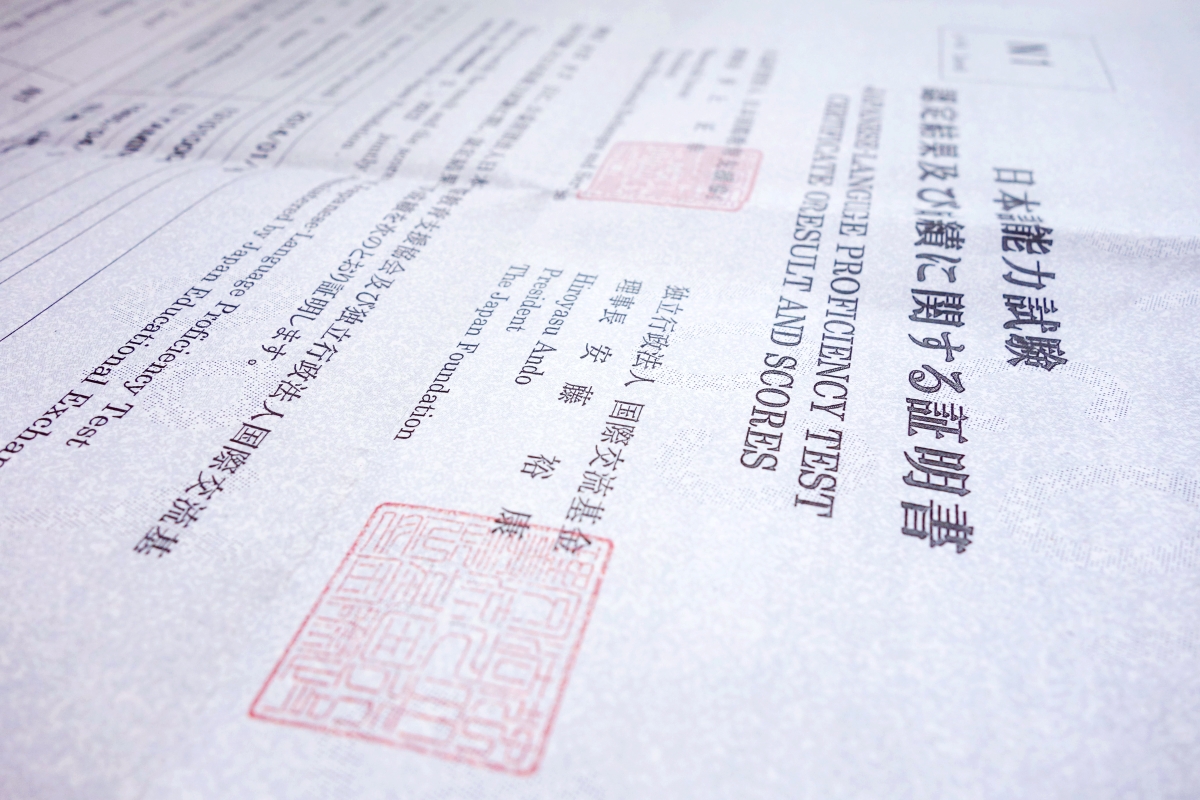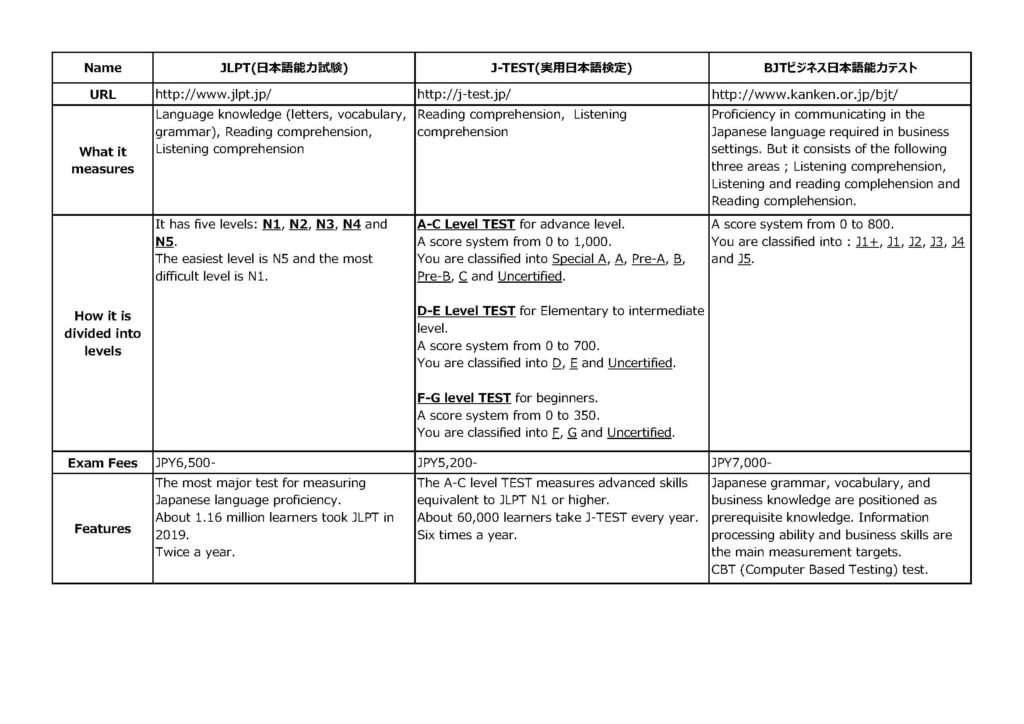What kind of Japanese schools are available?
March 25, 2022
Japanese language institutes are divided into four matrices, based on the two axes of lesson type (offline or online) and number of students.
*To be precise, there are group lessons both offline and online, but we omit them here to simplify the explanation.

If we use ABCD, clockwise from the top right, the main educational institutions that fall under each of these categories are as follows.
A: Regular Japanese school
B: Class lessons at online school
C: 1on1 lessons at online school
D: Dispatch of teachers
The general characteristics of each are as follows
A
Curriculum and schedule are fixed.
Many schools are for international students and class schedules are during the daytime on weekdays.
Some schools offer classes in the evening with small class sizes.
Many schools have changed to “B” because they cannot offer face-to-face lessons due to the COVID-19.
Tuition fees are the second lowest of the four, but long-term courses are usually offered.
B
There used to be very few, but the number has increased due to COVID-19.
Curriculum and schedule are fixed.
Learners from all over the world can take classes.
Some schools offer classes in the evening.
Tuition fees are the lowest of the four.
C
You can choose your own curriculum and schedule.
Learners from all over the world can take classes.
Some schools offer classes in the evening.
Tuition fees are higher than B, but lower than D.
Many teachers are familiar with lessons for business people.
D
You can choose your own curriculum and schedule.
Tuition fees are the highest of the four.
Many teachers are familiar with lessons for business people.
However, outside of large cities, there may be no Japanese teachers available.
Since the price per lesson is inversely proportional to the number of students, class lessons with a large number of students are inexpensive, and lessons with a small number of students, One-to-one is more expensive.
Based on the above characteristics, you should choose the one that best suits your needs.

For qualified teachers, the market price seems to be 2,000~8,000 yen per lesson (1 hour).
For teachers who have the ability to teach business people, the price is usually 3,500 yen or more.
The better the teacher, the higher the FEE may be. But the probability of your success in learning Japanese will be high, so the cost performance may be good. In fact, I know someone who charges 8,000 yen per hour. Her unit price is higher than other teachers, but she has a lot of repeat customers and there are no vacancies in her schedule.
If you want to keep the total cost of learning Japanese low, I recommend that you do what you can by self-study and focus your lessons with the instructor on exercises that you cannot do without him or her.
If it is difficult for you to bear the cost by yourself, your company may pay for it, so it is recommended that you check with your company. In particular, a company that pays for English language training for its Japanese employees may be willing to pay for Japanese language training for its non-Japanese employees.
Are there any matching sites for Japanese teachers?
March 17, 2022

(1) Face-to-face lessons
It seems that all the teachers registered on this site are qualified.
https://senseishokai.com/nihongo/index.html
(2) Online lessons
For online lessons, there is no site that I can introduce with confidence. There are several reasons for thinking that way.
Reason 1: Many of the teachers registered on matching sites are unqualified.
Just as there are qualifications for English teachers such as TEFL, TESL, TESOL, CELTA, DELTA, etc., there are also qualifications for Japanese teachers.
Qualified Japanese teachers are those who meet any of the following requirements.
(1) Pass the Japanese Language Teaching Competency Test.
(2) Have a bachelor’s degree and have completed a 420-hour training course for Japanese instructors approved by the Agency for Cultural Affairs.
(3) Complete either a major or minor program in Japanese education at a university or graduate school.
However, there are many matching sites that do not require them to be a certified teacher. If you are just looking for a conversation partner, it may be good enough, but if you want to take lessons, we recommend that you choose a qualified teacher at the very least. There is a big difference between someone who has systematically studied Japanese teaching methods and someone who has not.
Reason 2: Just having a qualification is not enough.
As I wrote in [What kind of teacher is a good Japanese teacher?], I consider a good teacher to be someone who can provide you with highly effective learning lessons and the know-how and advice you need to achieve your goals. Time performance is especially important for business people. For this reason, just having a qualification is not enough. In fact, I have interviewed more than 1,000 Japanese teachers, and there are not a few who are qualified but have poor teaching skills.
However, these are my personal opinions. If you and I have different preferences that we are looking for in a teacher, there is a chance that you can find a good teacher even on a matching site.
I hope these articles are helpful for you to meet a good teacher.
Do you have any tips for identifying a teacher’s skills?
March 8, 2022
As I wrote in another article, the definition of a good teacher varies from person to person, so it is difficult to give a general answer, but there is one magic question that can determine a teacher’s teaching experience, material selection skills, and ambition.

The question is: “Please tell me all of the textbooks you can use.”
Beware of teachers who can use only a few textbooks even if they have many years of experience. In one-on-one lessons, it’s necessary to customize lessons according to the student’s needs. If the instructor has been teaching one-on-one lessons for a long time, they should be able to use a variety of textbooks in order to meet the needs of a wide variety of students.
There are many Japanese teachers who have never had one-on-one lessons and have only had class lessons. These people may have used only the textbooks specified by the school they work at repeatedly. They may be able to teach very well on those textbooks, but their experience will be limited.
If a teacher has little experience, but is willing to look up a textbook for you, they are probably a good teacher.
What kind of teacher is a good Japanese teacher?
March 8, 2022
This question is similar to the question, “What kind of boss is a good boss?” Because the definition of a good teacher varies from person to person.

In my opinion, a good teacher is someone who can provide you with the most effective lessons and the know-how and advice you need to achieve your goals.
The following two qualities are necessary to achieve this.
(1) Japanese teaching ability
Such as, Japanese teaching experience, course design skills, material selection skills, level judgment skills, feedback skills, creativity and ambition.
(2) Communication skills
Such as, Logical explanation skills, coaching skills, cross-cultural understanding, fairness, business manners, quick response, positivity and the ability to communicate effectively.
However, it would be unrealistic to compare all these aspects to find the best teacher. Therefore, I think it would be more realistic to try to learn from a few different teachers at first, and then take lessons with the one you think is the best for you.
Should I take the JLPT?
February 17, 2022
This is a question that has some divided opinions among Japanese language teachers.
If you are an international student, it may be required for university admission, but if you are a businessperson, it is probably not. Studying for the JLPT can be useful, so in this article, we have organized the features of the JLPT, so that you can decide for yourself whether it is worth taking or not.

Feature (1): Listening and reading test
There is no writing and speaking. In other words, you will not know how well you can actually communicate in Japanese.
Even if a person has passed N1, which is the highest level, there are still people who might not even be able to carry on daily conversations.
Feature (2): The most famous test to measure Japanese language proficiency
As mentioned above, the JLPT does not measure the actual operational ability, but it is the most popular and well-known test, so many companies use the JLPT as an indicator for hiring requirements.
Feature (3): Easy to prepare for and easy to study on your own.
As mentioned in (1), the JLPT is an input-based test, so the skills to be developed are clear and easy to prepare for. Also, as mentioned in (2), since many people take it, there are many materials available for it. Therefore, it is possible to reach a certain level by just self-study.
For example, if you improve your basic vocabulary and grammar by studying for the JLPT on your own, and then take lessons after you have reached a certain level, you will be able to reduce the total cost of studying Japanese.
Feature (4) You can get points to receive preferential treatment in Japan’s immigration control.
Those who pass JLPT N1 receive 15 points, N2 receive 10 points under the government’s “Point-based Preferential Immigration Treatment System for Highly Skilled Foreign Professionals.” Individuals with a total of 70 points or higher receive preferential treatment at immigration. For BJT, 15 points will be awarded for 480 points or above, and 10 points will be awarded for 400 points or above.
For more information, please visit the Immigration Bureau of the Ministry of Justice website.
https://www.moj.go.jp/isa/other_languages.html
Based on the four points above, if you feel that there is an overall benefit, why not give it a try? You should also consider whether or not you can realistically invest the amount of time required to pass the test.
Please refer to this article for the study time required to pass the JLPT.
What kind of tests are there for Japanese language?
February 17, 2022
The most famous test is the JLPT (Japanese Language Proficiency Test), but many people also take the J-TEST, BJT, and others. So here is a summary of them including what it measures, how it is divided into levels, the cost, and the features.

Please check the official website for details and the latest information.
JLPT(Japanese Language Proficiency Test) http://www.jlpt.jp/
J-TEST (Practical Japanese Language Test) http://j-test.jp/
BJT (Business Japanese Proficiency Test) http://www.kanken.or.jp/bjt/
Do you have any tips for staying motivated?
February 4, 2022

Yes, there are some. But first, I suggest you understand the characteristics of motivation.
-Motivation is not constant, it always changes.
-When you encounter difficulties, your motivation is more likely to go down than up.
In light of the above, my advice is not to think of ways to maintain your motivation, but rather to think of ways to continue learning Japanese even when your motivation drops.
Specifically, I recommend the following methods.
(1) Make Japanese study a habit.
You don’t need to be motivated when you brush your teeth. This is because it has become a daily activity for you. Make it a habit to study every day, even for a short time.
(2) Declare your goals to the people around you.
People are less likely to slack off when they feel like they are being watched, so declare your goals to your family and friends, and if you do on SNS, you may find others with similar goals. For this reason, it is important to make your study plan achievable.
(For more information on how to create a study plan, please refer to this article.)
(3) Always think positively.
As you continue to study, there may come a time when you want to quit. For example, even though you are studying hard, you may not be able to improve. In such cases, believe that you can definitely grow because you are studying efficiently, and continue steadily.
These methods can be used for more than just learning Japanese, so I hope they will help you in your other challenges as well. I have been successful in dieting and TOEIC by using the above methods. And now I’ve declared my goal to finish a full marathon within 4 hours!
Do you have any tips for creating a Japanese study plan?
February 2, 2022
The key to creating a plan is “SMART”. The word “SMART” comes from coaching and is a combination of the following five acronyms

(1) S: Specific
The more specific and clear your goals are, the more vividly you can imagine the process of achieving them.
(2) M: Measurable
When you set a numerical goal, you will know whether the goal has been achieved or not. On the other hand, if you set a goal that you cannot determine whether it has been achieved or not, you will not be able to use the PDCA cycle when thinking about the next goal.
(3) A: Achievable
Do not create a plan that is too difficult. Consider the difference between your current level and your target level, and make your plan realistic.
(4) R: Relevant
Create long-term, medium-term, and short-term goals respectively, and link the three together.
(5) T: Time-bound
Stop being vague and say, “Someday”, “sometime soon” and set a clear deadline. By setting a deadline, your plan will become more concrete and realistic.
Based on these five points, set long-term, medium-term, and short-term goals that suit you.
Please refer to the following examples.
Example 1
Long-term goal: Pass JLPT N1 in December 20XX.
Mid-term goal: Pass JLPT N2 one year before that, and N3 two years before that.
Short term goal: Memorize 500 Kanji characters by~, 1000 by~ and 1500 by~. Memorize 500 vocabs by~, 1000 by~ and 1,500 by~.
Study for one hour every day.
Example 2
Long-term goal: To be able to give a 5-minute speech in Japanese by the conference in XX/XX/XXXX.
Mid-term goal: To be able to hold a simple conversation by XX, 20XX, and to be able to hold a daily conversation by XX, 20XX.
Short term goal: To finish the ~ textbook by~ and the next textbook by~.
Take two lessons and do four hours of self-study every week.
As for (3) A: Achievable, it is recommended that you have your Japanese teacher or someone with experience in learning Japanese check it out if possible.
Should I make a plan to study Japanese?
February 2, 2022

If you want to increase your chances of success as much as possible, I recommend that you create a study plan.
Learning a language is often compared to “sailing,” “mountain climbing,” or “running a marathon,” all of which have a clear goal and a plan to reach it. Learning a language is a longer term game than those, so I think it’s better to create one.
The specific advantage of creating a study plan is that it will increase your chances of entering the following spiral.
If you create an appropriate study plan, it will be easier to continue studying.
If you can keep studying, it will be easier to grow.
If you grow, studying becomes fun.
If it becomes fun, it becomes easier to continue studying.
However, some people are not very good at making plans or studying step by step.

There are two types of learners: the climber type and the surfer type. The climber type is the one who is good at following a plan step by step, while the surfer type is the one who wants to study while having fun(*).

For the surfer type, it is more fun to watch Japanese movies and dramas or talk with Japanese people than to follow a plan and study step by step. And if they don’t enjoy it, they won’t be motivated and are more likely to stop studying. Studying is meaningless if you don’t continue, so it is important to choose a learning method that makes it easy for you to continue studying.
*Please forgive me if I use this analogy for convenience. I do surf as a hobby, but my learning style is climber type, so I understand that this analogy is not appropriate for some people.
Categories
Recent Posts
- I cannot keep up with meetings conducted in Japanese. Are there any good ways to study?
- Are there any good writing materials for business Japanese? (Three keys to developing business Japanese writing skills.)
- Are there any free materials available for studying business Japanese reading?
- Should I read newspapers for reading practice in business Japanese?
- Are there any good business magazines to practice reading business Japanese?
Archives
- August 2022
- June 2022
- May 2022
- April 2022
- March 2022
- February 2022
- January 2022
- October 2021
- January 2021
- August 2020
- July 2020
- June 2020
- May 2020
- April 2020
- March 2020
- February 2020
- January 2020
- December 2019
- November 2019
- October 2019
- September 2019
- August 2019
- July 2019
- June 2019
- May 2019
- April 2019
- March 2019
- February 2019
- January 2019
- December 2018
- November 2018
- October 2018
- September 2018
- August 2018
- July 2018
- June 2018
- May 2018
- April 2018
- March 2018
- February 2018
- January 2018
- November 2017
- October 2017
- July 2017
